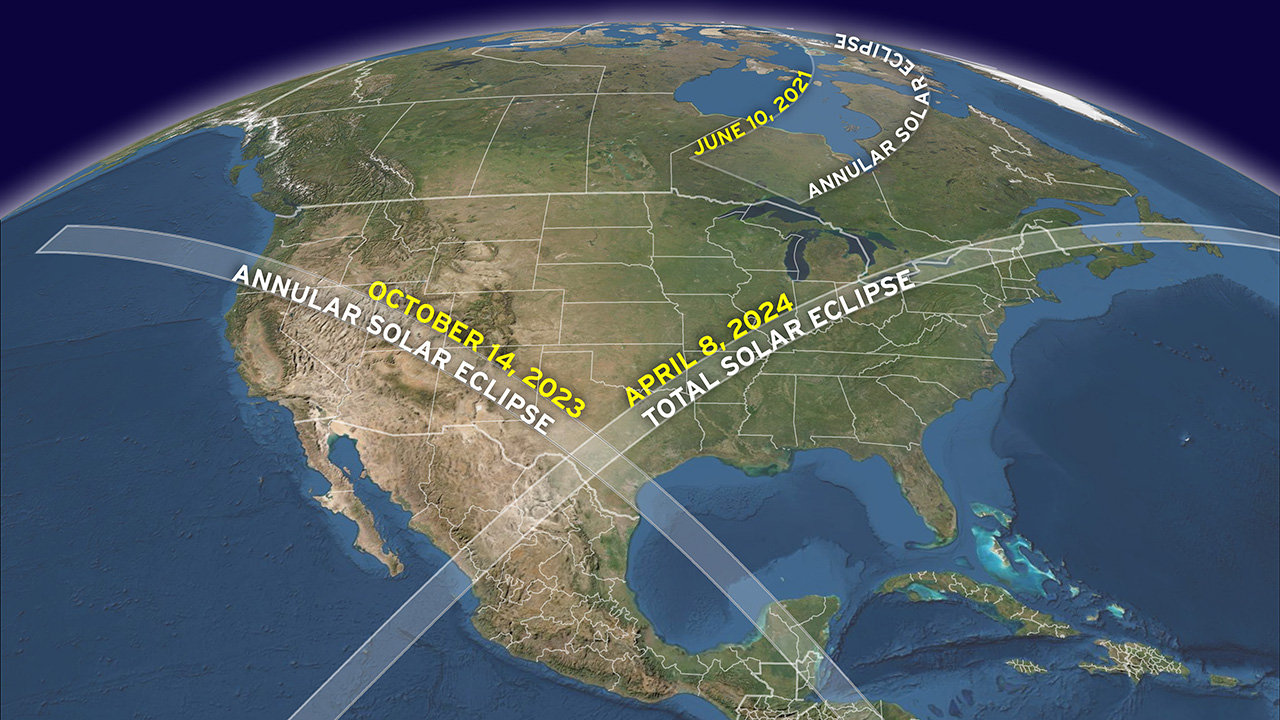Eclipse in Antarctica
Total Solar Eclipse – December 4, 2021
Photo by Karen Kayser
Jump to 20:45 to see totality. The graphic below shows what to look for!
NASA EDGE talks NASA Heliophysics, NASA Solar Missions, Eclipses, and Space Weather as the perfect setup for exclusive, high-resolution footage of the 2021 Antarctic Total Solar Eclipse. Join Blair and Franklin as the talk with NASA Scientists Kelly Korreck, Michael Kirk, and Jesse Woodroffe before sharing this exclusive eclipse footage provided by the J. M. Pasachoff Antarctic Eclipse Expedition. Credit to Christian Lockwood, Theo Boris, David Zimmerman, Janet Boris, and Peter Boris for providing the stream and footage of the eclipse.
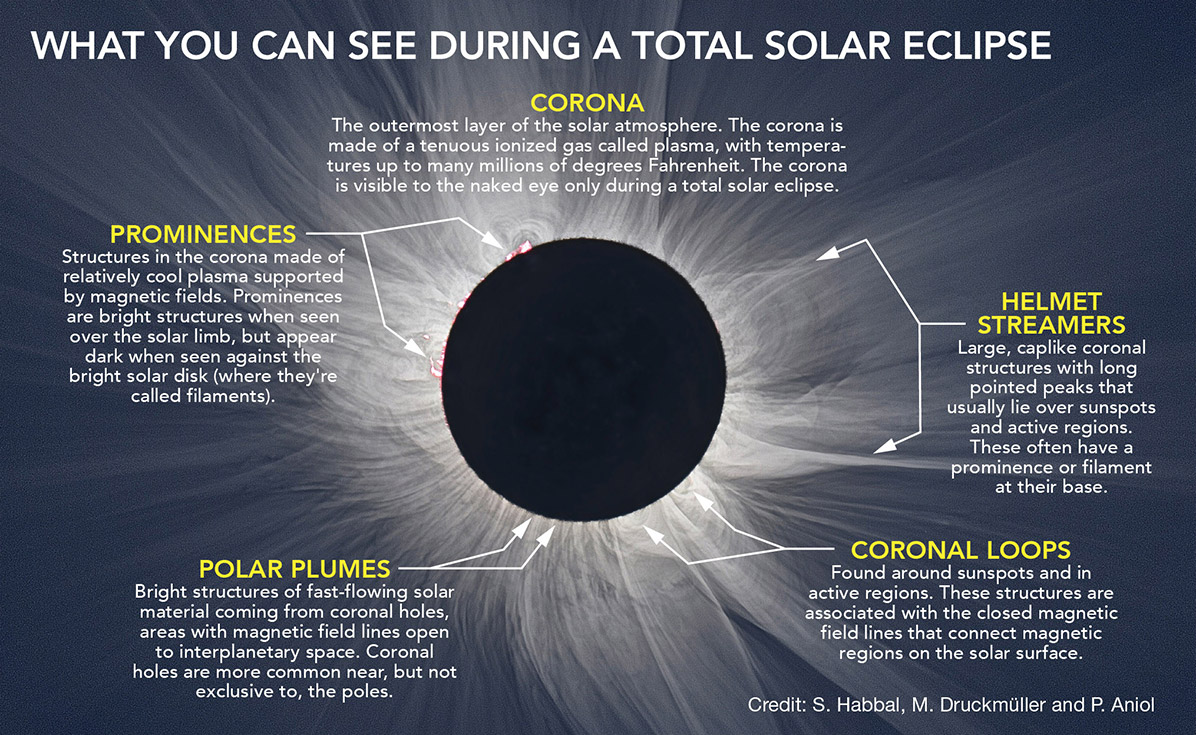
C. Alex Young of The Sun Today is in Antarctica and saw it live! Weather conditions were not great, with serious waves as the boat moved to the path of totality. Clouds blocked the view of the corona, but it’s the full experience that makes it special.
Video below has no sound. Filmed from a boat off the Antarctic coast.
[REPORT FROM ALEX – 2021.12.03 – Before Eclipse] – Hello from Shingle Cove, Coronation Island in the South Orkney Islands. It is the day before the Dec. 4 total solar eclipse which starts in just over 12 hours. We set sail this afternoon for open waters to the NE to view the eclipse. We are expecting about 8 other ships in the area early tomorrow morning. The eclipse starts at 3:18 am local time. The Sun will be only 4 degrees in the sky. Sunrise is at 2: am. Totally starts at 4:07:05 am and ends at 4:08:47 am. Last contact and the end of the eclipse is 4:59 am. Satellite contact is on and off so I hope I can get this video out of our current location. I hope to have more video and photos from our landing as well as the eclipse and when we reach the Antarctic continent. Stay tuned for more first-hand accounts (with bonus icebergs, penguins, whales, seals, albatrosses, & more)! Clear skies!
🌞 🌑 🌎 🌊 🛥️ 🧊 🐧 🐳 🦭 🐦
[2021.12.04 – After Eclipse] – No corona but amazing none the less. We moved off the center line closer to the edge of the south Orkneys because of severe seas. We had about a minute of the shadow and extreme darkness because of the cloud cover. Birds swarmed around the ship as darkness fell upon us. It was quite surreal and calming and after the darkness began to pass the icebergs around us and the glaciers and island next to the ship magically reappeared. I caught the come and go of the Moon’s shadow and darkness with a timelapse video using my iPhone.
Eclipse Highlights
This is an impressive photo: The 2021 Dec 4 total solar eclipse (or precisely the Moon’s shadow) over Antarctica captured by the Earth Polychromatic Imaging Camera (EPIC) onboard the DSCOVR spacecraft, ~1.5 million km or ~1 million mi away from Earth at the L1 point ☀️🛰🌚🌍 pic.twitter.com/MWTTz8cSvA
— Dr. Erika Palmerio (@erikapal) December 6, 2021
This is the whole sequence of SOHO/LASCO observations (from near Earth) on 2021 Dec 4 between ~4 and ~15 UT (totality was at 07:44 UT). The solar western limb became suddenly quite busy! 😅 pic.twitter.com/veWNlzMSof
— Dr. Erika Palmerio (@erikapal) December 4, 2021
Thanks @NASA for the live feed of the total solar eclipse from Antarctica. Got a glimpse of “Bailey’s beads”, rays of sunlight passing between lunar mountains and valleys. Also a nice red prominence on the limb. Hope you got a good view Alex @TheSunToday pic.twitter.com/0FpRS7CaKa
— Peter T Gallagher (@petertgallagher) December 4, 2021
So excited to be starting my year at the South Pole as a winterover for the @SPTelescope with a spectacular partial solar eclipse! On the left is the South Pole Telescope and to the right is the @BICEP_Keck telescope, with the crew from both telescopes silhouetted in between pic.twitter.com/UnnECtbAUJ
— Aman Chokshi (@aman_chokshi) December 6, 2021
iPhone screenshot of the footage taken of this mornings sunrise total solar eclipse at 41000 feet altitude in Dreamliner plane.
Phone taped to the window. Full footage will follow. pic.twitter.com/tVxfp6wUaR
— Scopes4SEN (@PatrickPoitevin) December 4, 2021
Unfortunately, the clouds never quite cleared for us down here at the Rothera Research Station for the #SolarEclipse. We did get a noticeable dip in light levels though. What a place to experience this celestial event!@BAS_News pic.twitter.com/VUazdXq3MD
— Matt Hughes (@Hughes_Matt) December 4, 2021
EarthSky contributor C. Alex Young traveled far south to see the total solar eclipse of December 4. NASA showed a great livestream of the event, which you can see in this post. We’re expecting more photos today. Check back! https://t.co/ROtBU2u1D7 pic.twitter.com/OjwoMs5OX2
— EarthSky (@earthskyscience) December 4, 2021
Even though the South Pole was outside of the totality of yesterday’s solar eclipse, they still got some pretty great views from the station galley! These awesome pictures were taken by UMN graduate student, Jamie Cheshire! pic.twitter.com/wTxsawM6FT
— BICEP/Keck (@BICEP_Keck) December 5, 2021
The maximum duration of this total solar eclipse is just short of 2 minutes.
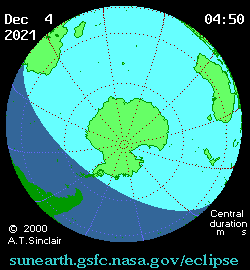
The unusual path of this eclipse moves east to west across West Antarctica. Most eclipse paths move from west to east.
This reversal is only possible in polar regions. Its path across Antarctica will cross near Berkner Island, traverse an arc over the continent, exit, and pass over Shepard Island.
- Date: Saturday, December 4, 2021
- Magnitude: 1.0367
- Saros: 152 (13 of 70)
- Greatest eclipse: 7:34:38
- Max. width of band: 419 km (260 mi)
Most eclipses, including this one, happen mostly over water because the earth is 70% ocean.
The next total solar eclipse will occur on December 4, 2021, but will only be visible to a very small portion of Antarctica, or cruises to the water nearby. Alex Young will be on one of these cruises, so hopefully, we will have a first-hand account.
Chances for clear skies in the Southern Ocean are only 10%. This is a good reminder to see a total solar eclipse if you can! If it occurs over land, it’s often hard to get to those locations like the last total solar eclipse in the Andes Mountains in South America.
But you’re in luck because the 2024 eclipse will be visible in parts of the US, Mexico & Canada! Start making plans now to see the next one on April 8, 2024. After that, you’ll have to travel, because you won’t see another one in the US until 2045!! Get to the path of totality in 2024, and hope for no clouds.
There’s also an Annular Solar Eclipse coming up. It will be visible in parts of the United States, Mexico, and several Central American and South American countries on October 14, 2023, at 15:03 UTC. Stay tuned for details!
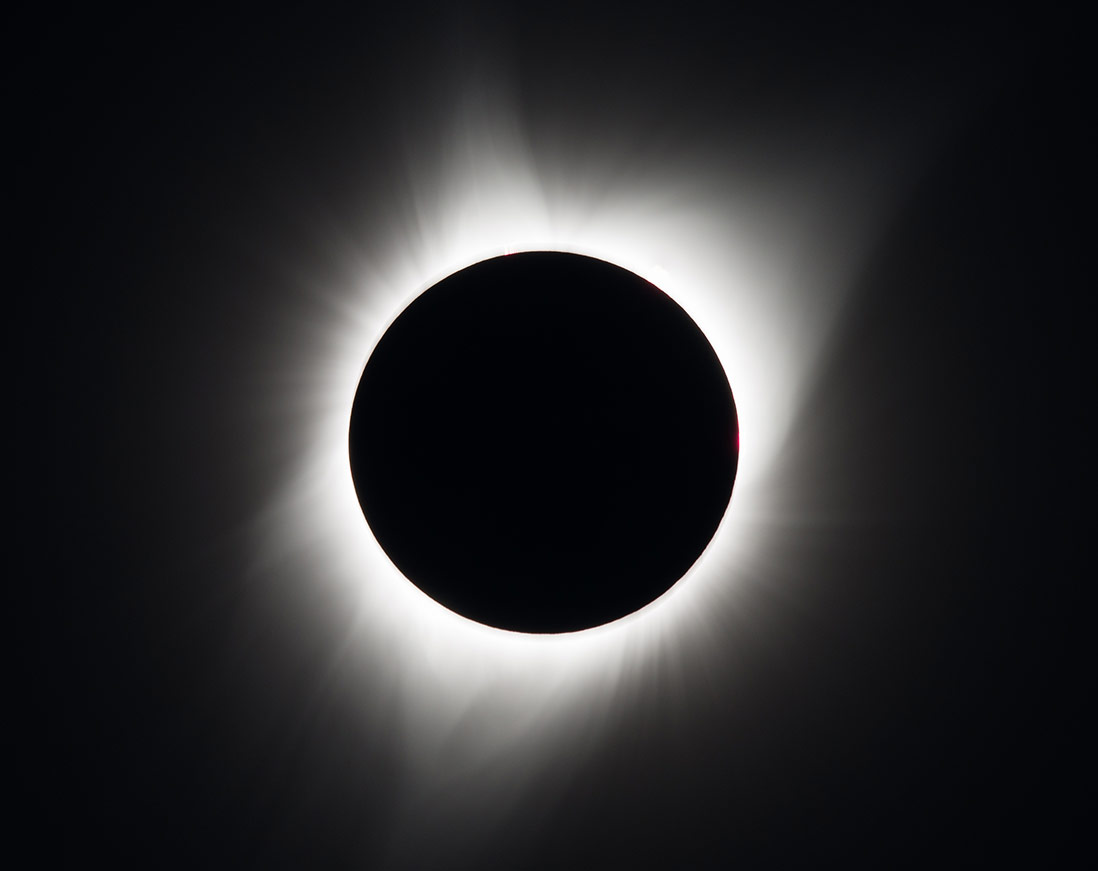
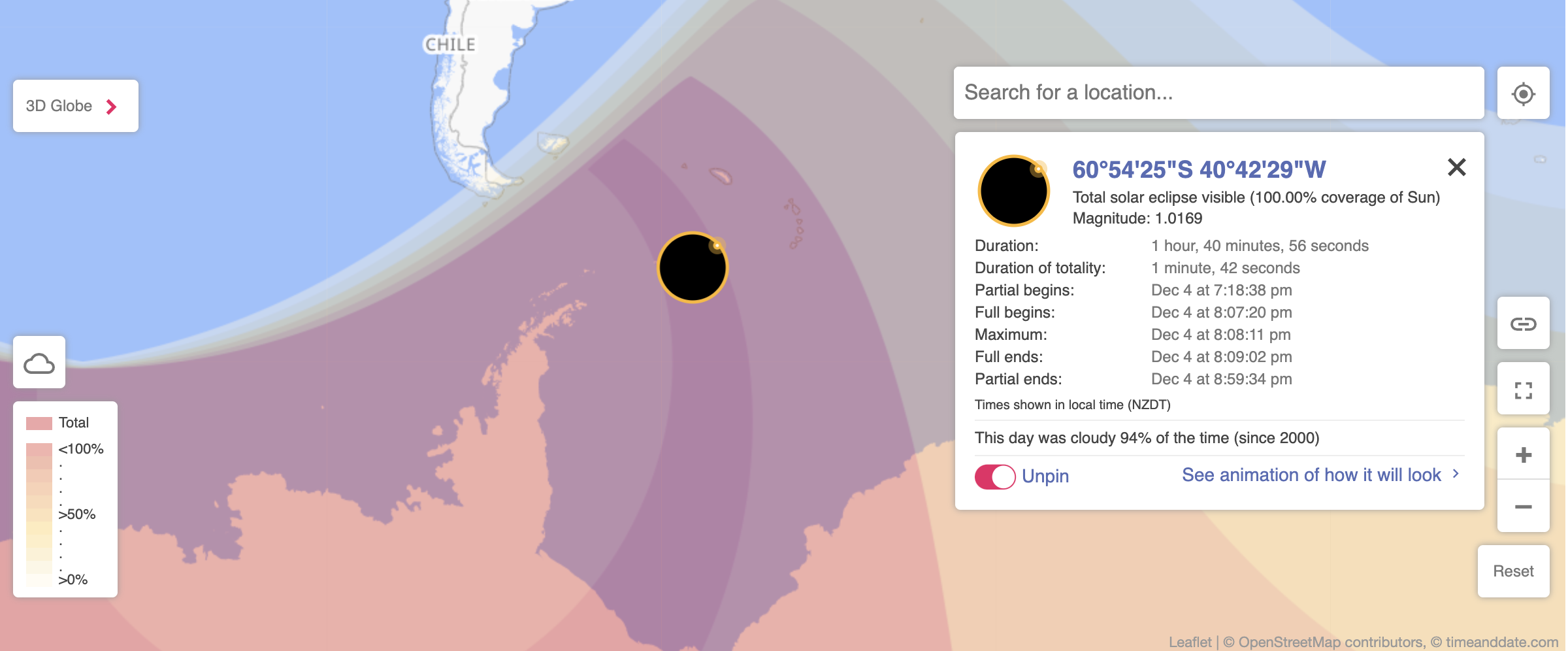
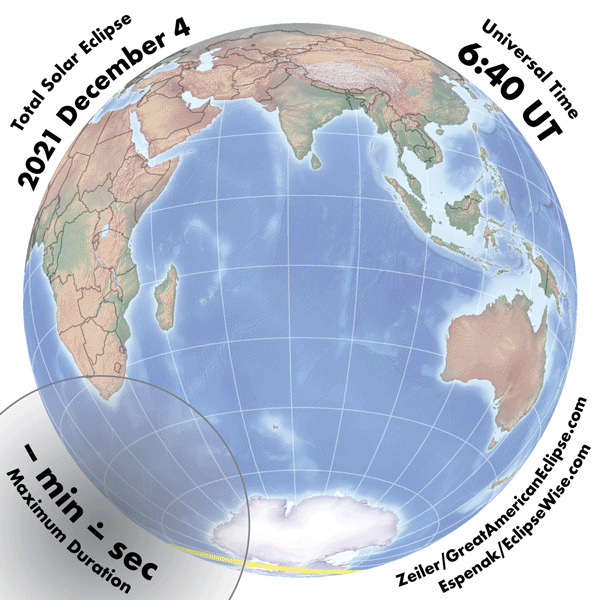
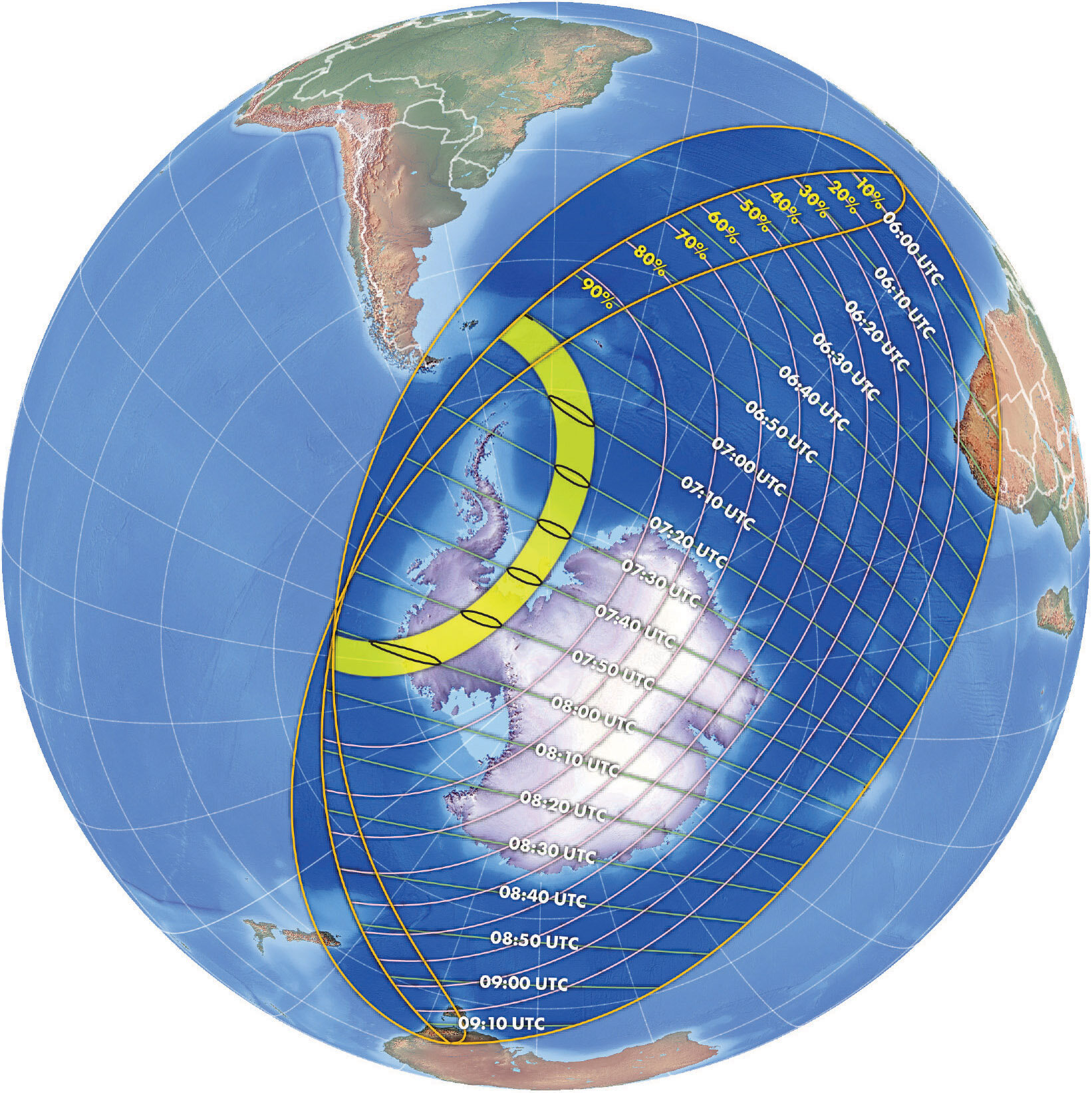
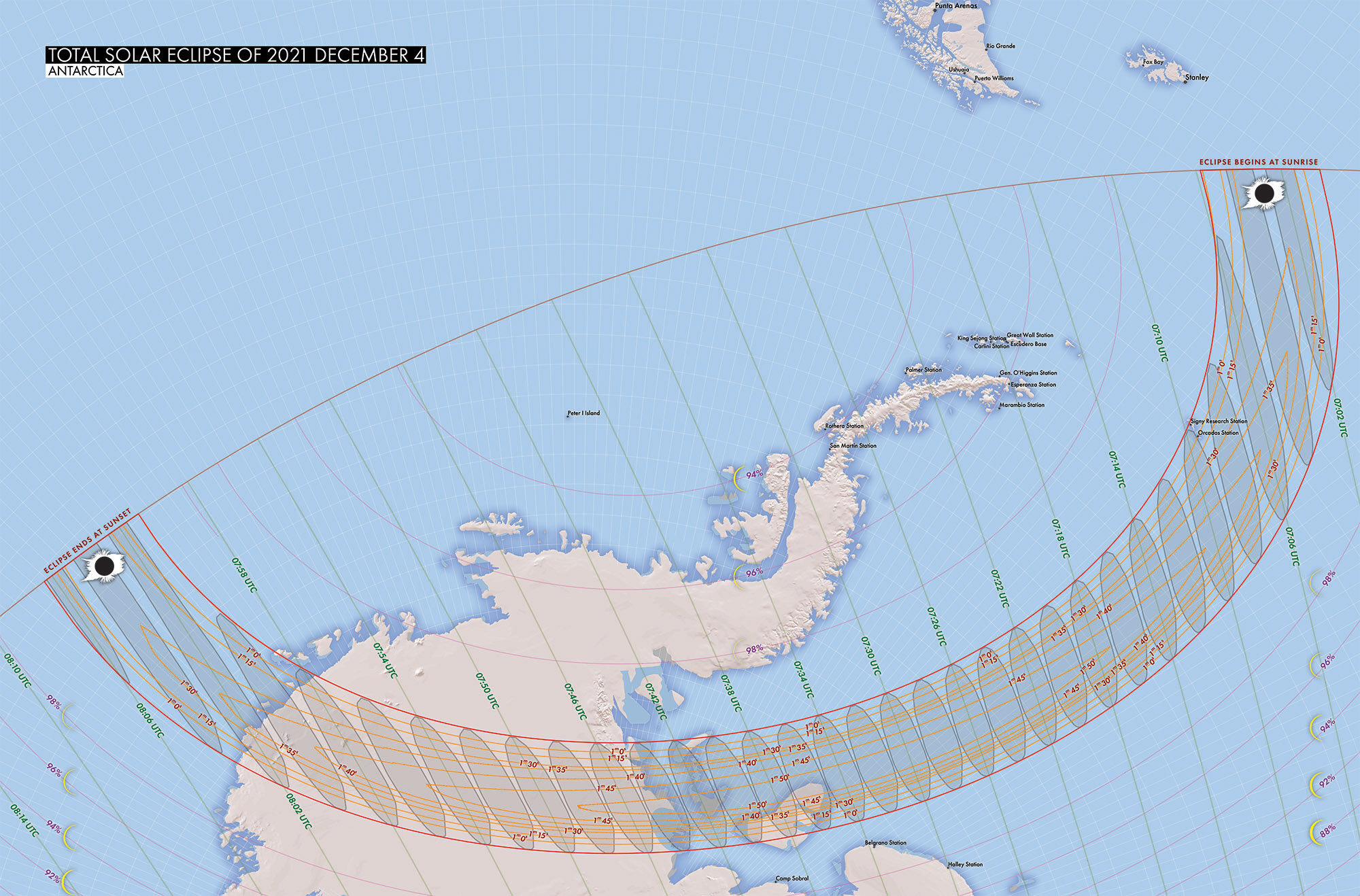
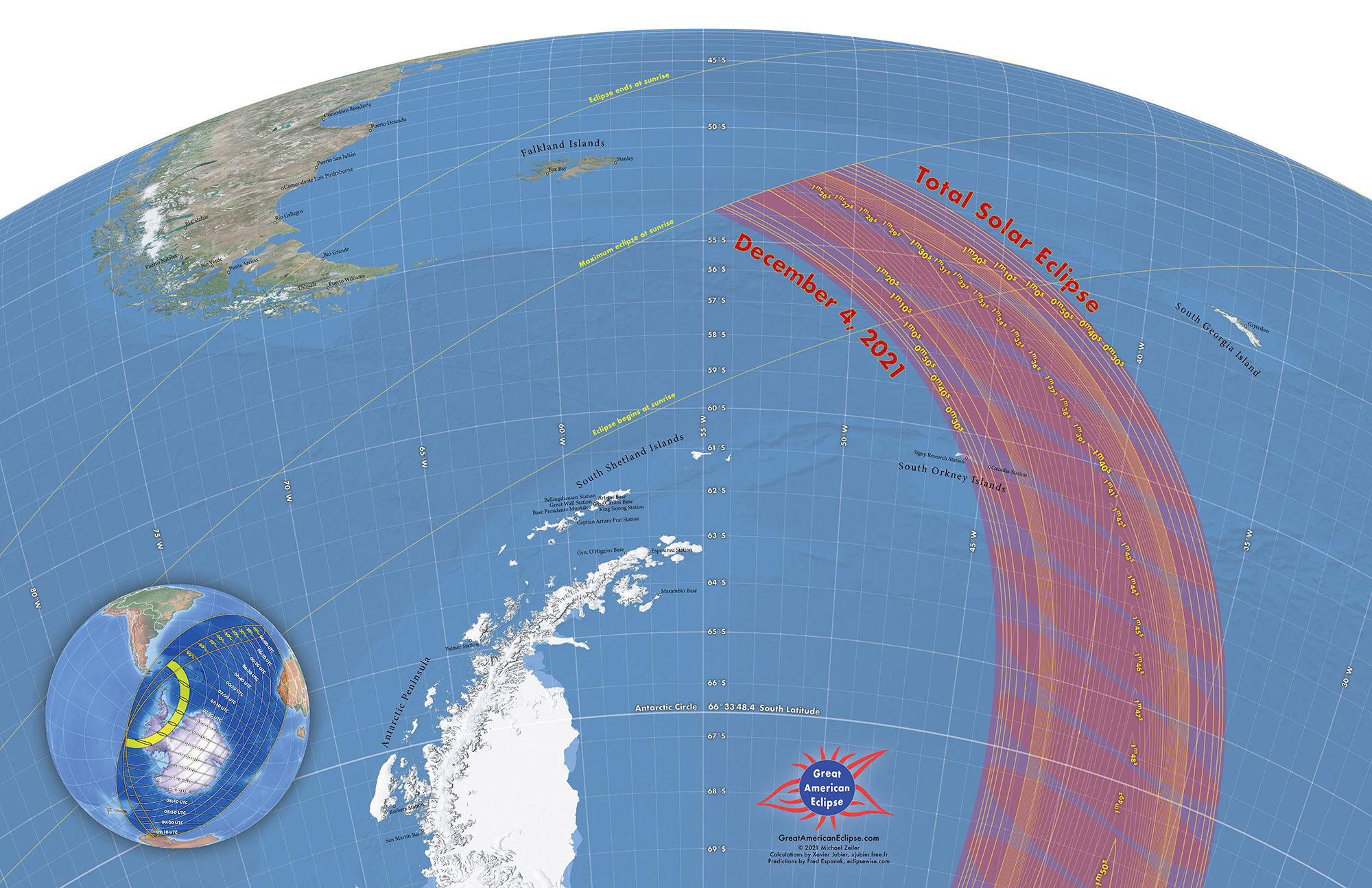
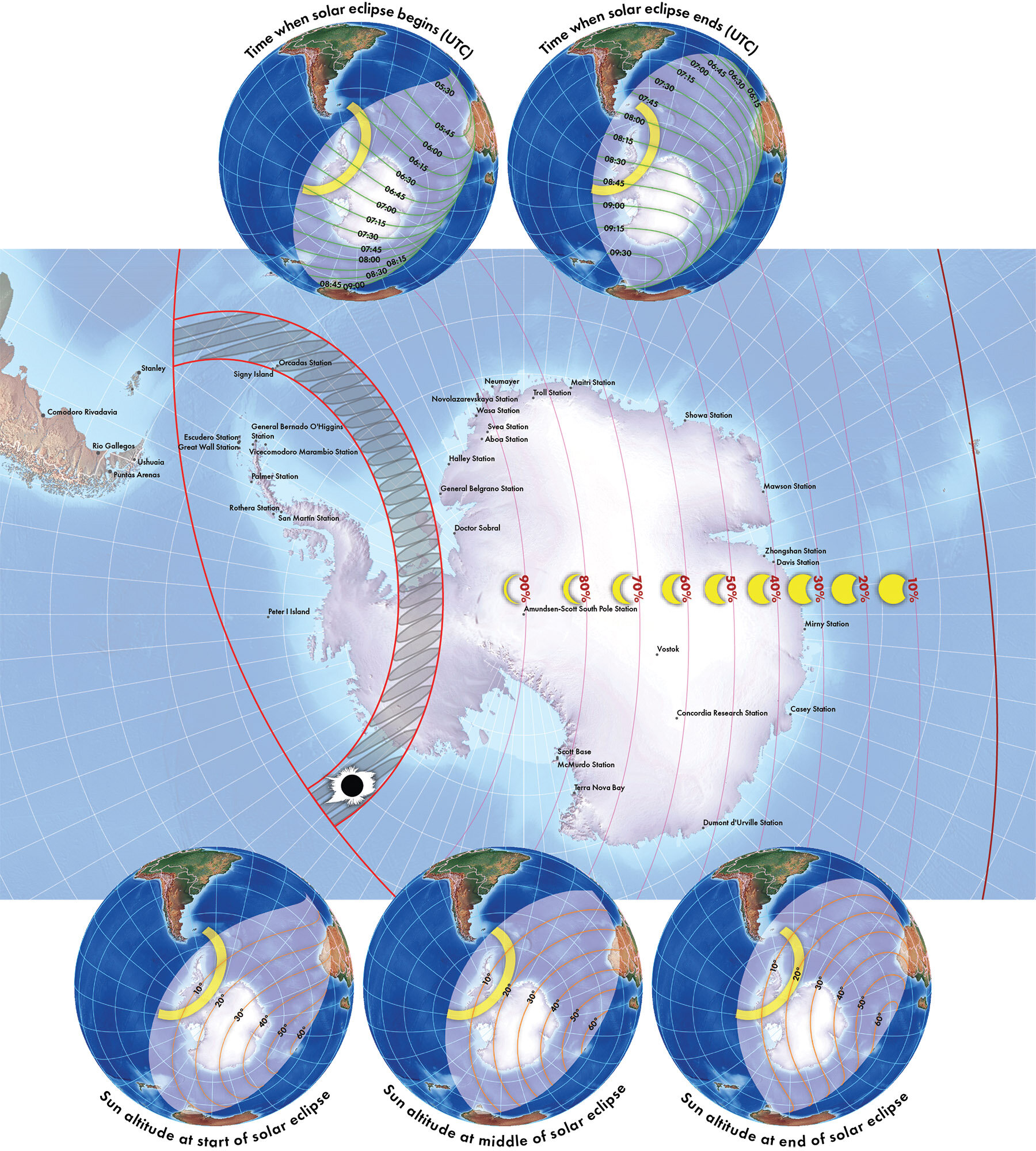
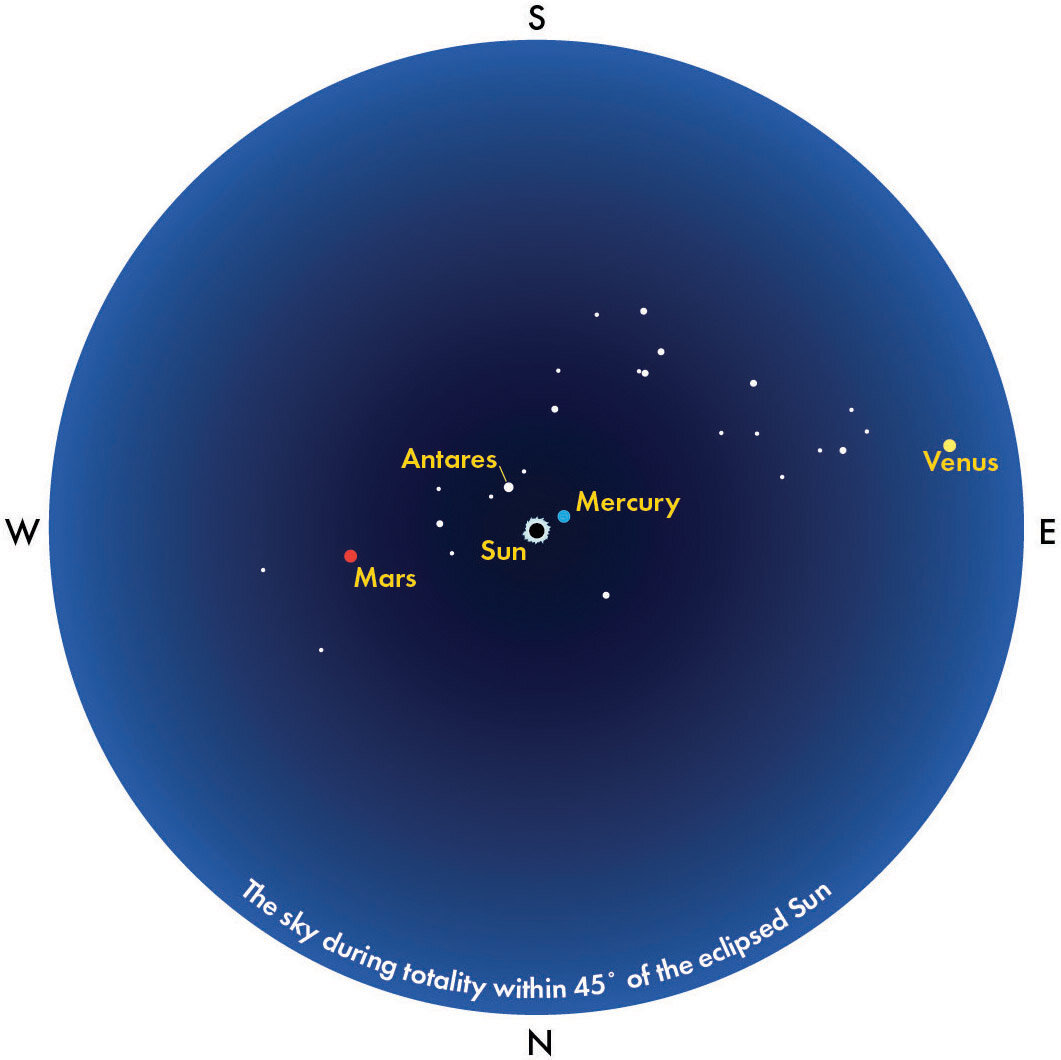

The Sun, Earth, and Moon Never Ceases to Amaze
 This is certainly true when it comes to lunar and solar eclipses. When the Moon, Earth, and Sun are lined up just right we can get a lunar eclipse (during a full moon) and a solar eclipse (during a new moon). Well, it is that time again – Eclipse Season!
This is certainly true when it comes to lunar and solar eclipses. When the Moon, Earth, and Sun are lined up just right we can get a lunar eclipse (during a full moon) and a solar eclipse (during a new moon). Well, it is that time again – Eclipse Season!
This is the second eclipse season of 2021 with a deep partial lunar eclipse & total solar eclipse!
Every year there are typically two eclipse seasons, which contain at least two and sometimes three eclipses. Each eclipse season is roughly 34 days long and repeats at 173.4 day intervals (close to 6 months).
The first eclipse season for 2021 had two eclipses:
- a total lunar eclipse on May 25-26, 2021,
- an annular solar eclipse on June 10, 2021.
The second eclipse season for 2021 has two eclipses:
- a deep partial lunar eclipse on November 18-19, 2021
- and a total solar eclipse on December 4, 2021
NASA live-streamed the eclipse from Union Glacier, Antarctica, starting at 1:30 a.m. ET on Dec. 4 . Here is the replay.
NASA’s feed is courtesy of the JM Pasachoff Antarctic Expedition.
Two upcoming solar eclipses in 2023 & 2024.
After that, you’ll have to travel, because you won’t see another one in the USA until 2045!!


